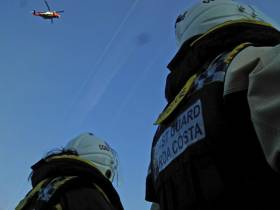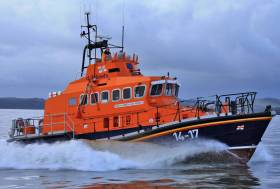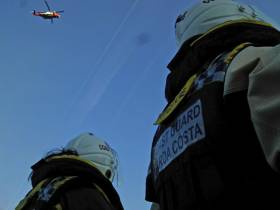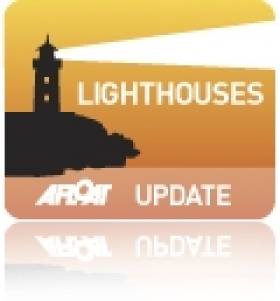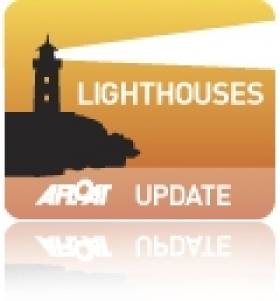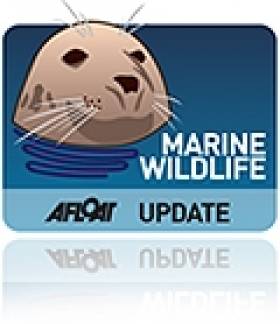Displaying items by tag: Hook Head
Fall From Helicopter Winch ‘Unlikely’ To Have Led To Death In Hook Head Rescue Tragedy
#Coastguard - The Irish Coast Guard crew winching two teenagers from the sea when one fell from her harness had never lifted two casualties at the same time before, as BreakingNews.ie reports.
Aoife Winterlich, 14, was one of four teenagers who had been swept into the sea off Hook Head during an outing for venture scouts on 6 December 2015.
Two managed to swim ashore but Winterlich got into difficulty in heavy seas. The fourth, a 15-year-old boy, attempted to keep her afloat until rescue arrived minutes later.
It was when Rescue 117’s crew attempted to transfer the pair into the helicopter that Winterlich slipped from her strop some 45 feet back into the water.
Records show that the winchman was back in the water to retrieve Winterlich within moments, and that she was in the helicopter just over a minute after.
The inquest into Winterlich’s death this week heard that she died from lack of oxygen to the brain resulting from near drowning, and that there was no evidence of contributing physical trauma.
Prof Maureen O’Sullivan of Our Lady’s Children’s Hospital in Crumlin, who conducted the post-mortem, said the fall was unlikely to have contributed to Winterlich’s death, according to RTÉ News.
The inquest also heard that the coastguard helicopter’s winchman and winch operator had never performed a lift of more than one casualty in a single lift.
Winch operator Neville Murphy told Dublin Coroner’s Court the situation that led his college Sean Jennings to descend with two winch strops was “unprecedented”.
“Two people in the water, that generally doesn’t happen,” he said. “We can only train to certain limits. We can never know what we are faced with as we look out the door of the aircraft.”
Earlier this year, the Air Accident Investigation Unit report into the incident concluded there was “nothing to suggest that the winchman’s decision-making was anything other than sound”.
The inquest is adjourned till October. BreakingNews.ie has more on the story HERE.
Divers Rescued Off Hook Head By Dunmore East Lifeboat
#RNLI - Dunmore East RNLI rescued two divers who got into difficulty off Hook Head in Co Wexford on Sunday afternoon (28 May).
The volunteer crew were requested to launch their all-weather lifeboat at 1.19pm following a report from the Irish Coast Guard that two divers were in the sea and holding on to a buoy off Hook Head.
The two men had been doing a shore dive when they drifted offshore in tidal conditions.
Launching under coxswain Michael Griffin with four crew members onboard, the lifeboat was on the water within minutes. The Irish Coast Guard helicopter Rescue 117 from Waterford was also tasked.
Weather conditions at the time were good as the lifeboat made its way to the location around half a nautical mile from Hook Head.
On scene, the lifeboat crew observed orange smoke deployed by the helicopter overhead to guide the crew to where the divers had been located.
The divers, who were thought to be in the water for some 30 minutes, were assessed with one showing early signs of hypothermia.
Casualty care was administered on the lifeboat and the two divers were transferred safely back to shore at Slade Harbour, where they were made comfortable and not found to require any further medical attention.
Speaking following the callout, Dunmore East RNLI volunteer lifeboat press officer Neville Murphy said: “We were happy to help the divers and would like to wish them both a speedy recovery.
“As we approach the summer months, we would remind anyone planning any activity at sea to respect the water. Always wear the appropriate clothing for your activity and always wear a personal floatation device.
“Check the weather and tide times before you venture out and remember to always carry a means of calling for help and tell someone else where you are going and when you are due back.”
#Coastguard - The actions of a helicopter winchman during an incident in which a 14-year-old girl rescued from the sea fell back into the water have been found to be “sound” by an official investigation.
Aoife Winterlich died in hospital days after she and three other venture scouts were swept into the sea off Hook Head during an outing on 6 December 2015, as previously reported on Afloat.ie.
Two managed to swim to shore but Winterlich got in difficulty amid heavy seas, and the fourth youth, a 15-year-old boy, remained to keep her afloat till the Waterford-based Irish Coast Guard helicopter Rescue 117 arrived.
Severe conditions prompted the winchman to lift both teenagers from the water at the same time. As the three reached the helicopter, Winterlich slipped from her strop some 45 feet back into the water.
Records show that the winchman was back in the water to retrieve Winterlich just half a minute after reporting her fall, according to the Air Accident Investigation Unit Report as covered in The Irish Times.
Tragically, however, she died four days later at Our Lady’s Children’s Hospital in Crumlin.
“In the circumstances of this particular rescue, there is nothing to suggest that the winchman’s decision-making was anything other than sound,” the report said.
The Irish Times has more on the story HERE.
Inquiry Launched Into Rescue Incident As Teen Dies After Hook Head Tragedy
#Coastguard - The Air Accident Investigation Unit is conducting an inquiry after it emerged one of two teenagers recovered from the sea off Hook Head last weekend fell from a coastguard helicopter back into the water.
The Irish Times reports that 14-year-old Aoife Winterich died in hospital days after she and three other venture scouts were washed into the sea by a surprise wave during the last remnants of Storm Desmond.
As previously reported on Afloat.ie, two of the group managed to swim to shore, but Winterlich and a 15-year-old boy got into difficulty in what the Irish Coast Guard described as "confused" heavy seas.
The boy reportedly kept the unconscious Winterlich afloat until the coastguard's Waterford-based helicopter Rescue 117 arrived at the scene, and both were flown to hospital within 17 minutes of the callout.
However, it's been reported that during the winching process, which required both teens to be lifted from the water simultaneously due to the severity of conditions, Winterlich fell out of the rescue strop back into the sea – a drop of some 40 feet, according to Mail Online.
On Monday Scouting Ireland said it was launching its own review into whether there were "things that could have been done to make the trip safer". The Irish Times has more HERE.
Teenager Unconscious After Rescue From Water Off Hook Head
#Rescue - A 15-year-old girl who was one of two teens rescued of Hook Head yesterday (Sunday 6 December) was unconscious when she was taken out of the water, it has emerged.
As RTÉ News reports, the girl is one of four from a Dublin scouts group who were washed into the sea from the rocks by a surprise wave as the remnants of Storm Desmond passed over Ireland.
Two managed to swim to shore, but the others – the girl and a 15-year-old boy – got into difficulty in what the Irish Coast Guard described as "confused" heavy seas.
As of this morning (Monday 7 December) the girl was said to be in a critical condition at University Hospital Waterford. RTÉ News has more on the story HERE.
Unmanned Yacht Aground off Hook Head
A 10–metre catamaran type yacht that ran aground two miles north of Hook Head, in County Wexford, Ireland is believed to have drifted free from its moorings.
Volunteer lifeboat crew launched yesterday morning following reports of the grounded cruiser. On arrival, the lifeboat crew found the unmanned yacht sitting deep in the water, perilously close to the rocks.
First on scene was Fethard RNLI Inshore lifeboat whose crew established a tow with the yacht, however this proved unsuccessful.
Shortly after, Dunmore East RNLI Lifeboat arrived on scene and put two crew on board the casualty vessel with a pump to try and drain the water from the yacht and establish a tow to recover it to a nearby harbour.
However, once on board, the lifeboat crew discovered that the yacht had taken on a large amount of water and that it was in danger of sinking. When they attempted to establish a tow the vessel dangerously dipped low into the water and the attempt was abandoned.
The Irish Coast Guard Rescue Helicopter Rescue 117 were also called out to the incident.
A decision was taken to leave the vessel as it was determined that the crew were in danger if they stayed on the yacht.
Take A Virtual Tour Of Hook Head Lighthouse
#Lighthouses - The world's oldest operational lighthouse is worth a visit for any tourists in the Sunny Southeast, but now anyone can take a virtual tour of the Hook Head lighthouse from the comfort of their own home - or anywhere, if you're using a laptop!
Placed at the top of Lonely Planet's list of the 'Top 10 Flashiest Lighthouses', the Hook Head light has been opened to the public as a tourist attraction each year since 2001, and is a great spot for watching whales and dolphins.
Now the breathtaking view afforded from the top of this towering fixture of the Wexford coastline can be seen from anywhere in the world. Click HERE to see for yourself!
Frolicking Dolphin Pup Great Sign For Upcoming Celtic Mist Trip
#Dolphins - Marine photographer Myles Carroll snapped some beautiful shots of a dolphin pup frolicking in the waves off Hook Head last weekend, as TheJournal.ie reports.
The baby was just one of a near 40-strong dolphin pod sighted off the Wexford coast in recent days, just in time for the Irish Whale and Dolphin Group's latest cetacean spotting trip this weekend on board the Celtic Mist.
For details contact the IWDG at [email protected].
World's Oldest Lighthouse Hosts Keepers Global Gathering
#lighthouse – A global gathering of Lighthouse Keepers and enthusiasts will take place at the world's oldest lighthouse at Hook Head next weekend, September 13 to 15 and organiser's have today unveiled a fun filled programme of free events to keep families entertained.
Sunday, September 15 has been declared 'Sunday Fun Day' at the historic lighthouse, according to the manager Ann Waters everyone is invited to enjoy lots of entertainment. "Sunday is the day for free festival fun; we are looking forward to welcoming everyone to enjoy lots of fun entertainment, join in the singing of Sea Shanties with the Hooks and Crooks and enjoy the stiltwalkers and entertainers from Bui Bolg, the Claoimh Medieval Knights, games, face painting and lots more."
Sunday is the final day of the first gathering of Lighthouse keepers; festivities commence on Friday afternoon with a free open evening. Among those in attendance will be The Honourable Loyola Hearn, Canadian Ambassador to Ireland, Yvonne Shields, CEO of the Commissioners of Irish Lights and Larry O'Brien, Chair of Hook Heritage. Entertainment will be provided by the Wexford Male Voice Choir and soprano Emma Rochford.
On Saturday guests are invited to the Lighthouse Symposium 'If Lighthouses Could talk!' which will be hosted by former RTE News Anchor and Wexfordwoman Anne Doyle. Professor Kevin Whelan will offer an illustrated talk on Ireland in the Atlantic world focusing on mariners, merchants, migrants and light-keepers. Other speakers include guests from the Northern Lighthouse Board of Scotland and representatives from the Commissioners of Irish Lights and Newfoundland. The last principal Lighthouse Keeper and current Attendant at Hook Head Lighthouse, Tux Tweedy will attend, as well as several other former Lighthouse Keepers.
The weekend's highlight takes place on Saturday evening with drinks reception to be hosted in the historic cobbled yard at Hook Lighthouse with entertainment by Danescastle Traditional Irish Music Group and the Doyle Academy of Irish Dance. This will be followed by a Seafood Buffet and after-dinner entertainment provided by the Kennedy Sisters and traditional Irish music from Saolta. A fireworks display over the ancient landmark will bring this memorable evening to a spectacular close.
The global gathering of Lighthouse Keepers is being hosted in co-operation with the commissioners of Irish Lights and on behalf of past lighthouse keepers of Hook Lighthouse For further details see hookheritage.ie
First Whales of 2013 Sighted Off Wexford
#MarineWildlife - The whale watching season is well under way off the coast of Wexford, as the Irish Whale and Dolphin Group (IWDG) reported its first sightings of 2013 this week.
Just an hour into the maiden cetacean spotting voyage of the IWDG's new research vessel Celtic Mist at the weekend, members of the group were treated to the sight of fin whales and minke whales feeding south of Hook Head - not to mention some of the 'superpod' of dolphins seen last week in the Irish Sea.
And as World Irish reports, local wildlife ranger Tony Murray spotted the first humpback whale of the year in the same area.
Murray suggested that "a large herring haul going on in the southeast at the moment" is the main attraction for the ocean giants and their smaller, more plentiful companions.
The IWDG's Facebook page has a photo gallery containing some stunning snapshots of the day's excursion HERE.



























